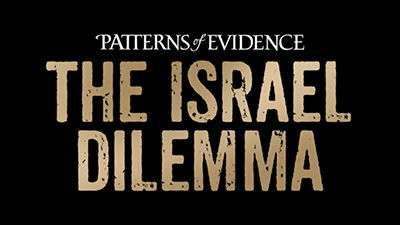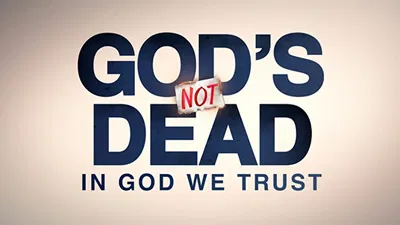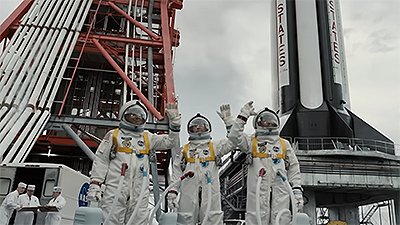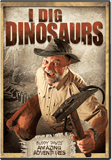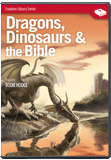
Is The Good Dinosaur Good?
We attended the advance 3D showing of Disney/Pixar’s The Good Dinosaur earlier this week. At this showing, a cartoon short, Sanjay’s Super Team, preceded the main feature and is said to be paired in upcoming showings of The Good Dinosaur. The short cartoon is based around the imaginations of the boy Sanjay, his superhero character, and Hindu gods against a demon whose depiction may be a bit scary for younger viewers. However, “good” triumphs in the end. In a similar way, The Good Dinosaur had some scary, foreboding elements, but “good” won in the end.
[Spoiler Alert: This movie review reveals the plot of The Good Dinosaur.]
Millions of Years
The Good Dinosaur opens with the words “65 million years ago” and a view overlooking an asteroid belt. An errant asteroid bumps another out of the belt, sending it careening toward Earth. The common movie trailer depicts the next scene where the asteroid apparently skims the Earth’s atmosphere, but does not enter and crash, as in the proposed catastrophic event at the Chicxulub crater that was the beginning of the end of the dinosaurs’ reign on Earth. Why or how the asteroid missed the Earth is never explained, however.
“Millions of years later,” according to the movie screen, an agrarian scene unfolds, but the surprising farmers are dinosaurs. With a tail like a cedar tree, a large sauropod clears a field, using his nose to plow, saddlebags to seed, and strong lungs, large mouth, and a nearby river to water the crops. A thatched home nearby hosts not humans that have harnessed the dinosaur’s strengths for agriculture, but a female dinosaur, who speaks to the male dinosaur farmer. Soon the pair become parents to three young dinosaurs, the runt Arlo ironically hatching from the largest egg, not a feather to be seen.
The young dinosaurs grow up quickly, with the exception of Arlo for the most part, able to help out with farm chores, including pastoral care of something feathered, arguably chickens. Of note, since the supposed evolutionary process that has unfolded in our past was diverted with the asteroid that did not strike the Yucatán, the creatures depicted in the film, perhaps also somewhat due to artistic license, do not always closely resemble a creature we would recognize it as today.
Enter “Man”
A critter has been getting into their silo and eating the dinosaur’s corn, and a trap is set. Arlo’s job is to kill the critter to save the farm’s storage for the winter, but he has pity on the poor human child. Again, the altered evolution comes into play with a feral human boy crawling on all fours, growling, biting, and unable to speak unlike the civilized dinosaurs. As the boy gets away, the father dinosaur chastises Arlo and the chase begins that culminates in a dark scene where storms and floodwaters cause Arlo to lose his father. In another chase scene, timid Arlo himself gets lost from the farm and must fend for himself out in the wild as he makes his long journey back to his home. The boy attempts to befriend Arlo and is gradually welcomed as a pet in his entourage.
Despite man’s current not-so-impressive olfactory state, the boy not only acts like a dog but apparently has the ability to track. In an odd scene, the boy sniffs out berries that Arlo particularly likes, and as Arlo attempts to take some, a legged serpent blocks his attempt to eat this apparently forbidden fruit. The location of the bush, however, is far from Edenic, and the three fall off a non-lethal cliff where the boy saves Arlo from the serpent. A puzzling Styracosaurus-ish creature serves to affirm that the dinosaur and his pet boy are a good pair for surviving the harsh wilderness. We also learn that the boy’s name is Spot.
The pair does eventually find some other berries, but these are hallucinogenic, and the scene goes bizarre depicting their seemingly enjoyable experience, although leaving them sick at the end. Perhaps more disturbing was the Yellowstone-like latent volcanism, geothermal areas, and lightning storms that peppered the wilds outside the verdant farmland of Arlo’s home. Additionally, there seemed to be atmospheric disturbances that resembled the start of a tornado, but a funnel cloud never materialized.
No explanation was ever given for these phenomena, but since we are being put into an “alternate evolutionary Earth,” a few speculations can be hypothesized. Possibly the geographic area being portrayed was in or around Yellowstone, which would explain the geothermal areas. Perhaps the timeline of the movie is sometime after the Lava Creek eruption (conventionally dated around 640,000 years ago) after which volcanism would have been quiet for a while, but atmospheric disturbances might have still been ongoing.
The other possibility is that because of the “near miss” by the Chicxulub asteroid, the volcanism of the planet was markedly reduced. In recent years there have been geological hypotheses that the Chicxulub impact may have dramatically increased volcanism on a large regional or even continent-wide scale. In this alternate reality, we might expect to see less volcanism and more geothermal activity. This may also be postulated to have affected weather patterns, which in turn may account for the intensity of high winds and lightning storms.
The storms were apparently prevalent enough to have engendered a “religion” of sorts among some particularly disturbed and disturbing pterosaurs that became the main villains of the story. In Spot and Arlo’s encounters with them, the leader often says “the storm provides,” while feasting on the victims of the storm—not necessarily dead. Some Tyrannasuridae-like dinosaurs (possibly Albertosaurus?) aid Arlo and Spot, then wind up enlisting Spot’s tracking capabilities in exchange for showing Arlo the way back home. Apparently herbivore dinosaurs aren’t the only ones engaged in husbandry, as the Albertosaurs are rustling longhorn bison. Partly feathered raptors make their appearance as poachers, but are easily handled by the Albertosaurs and, surprisingly, Arlo, who seems to have finally gained some “grit,” as the largest Albertosaur calls it.
Finally, Arlo’s home-mountain is in sight, and the pair says their goodbyes to the Albertosaurs. As they camped alone again that night, Arlo and Spot connected on a different level, disclosing their family situation to one another nonverbally. Spot’s wild state is somewhat explained by the fact that he was orphaned and left to fend for himself. He howls in despair, and Arlo joins him commiserating, remembering his lost father. The howls are heard again the next day, but this time, the silhouette of another human is the source. Spot’s curiosity draws him away for a time, but Arlo returns Spot atop his back, assuring him he’d have a good home with his family.
But the storm-worshipper pterosaurs aren’t through with Arlo and Spot. Spot apparently looked too “juicy” to pass up, and Arlo had mistakenly given them directions to find them in asking for aid to find his home, Clawtooth mountain. The pterosaurs snatch Spot from Arlo’s grasp and knock Arlo off a cliff, rendering him unconscious. Arlo has a dream of his father encouraging him to be the dinosaur he never was, making clear Arlo needed to wake up and rescue Spot.
Another storm of geologic unrest is brewing as Arlo comes to rescue Spot on the banks of the river that claimed his father’s life. A landslide precipitates another wash-out, taking Arlo and Spot as well as the pterosaurs again downstream and over a waterfall. But Arlo manages to save Spot, while the pterosaurs finally seem to have repaid their debt to the storm.
Howls are heard again as Spot and Arlo continue their journey, but this time it’s closer and Arlo, apparently doubting his prior decision, does not interfere. A family of crouching humans approaches and sniffs Spot and shows him some humanly affection, which Spot appears all too eager to accept. Arlo knows what he must do, and this time encourages Spot, who would have been willing to stay with Arlo, to stay with his newfound family. Tearful goodbyes are exchanged, and Spot’s new family lifts him up to an upright position and walks away with Spot in a clumsy bipedal gait for the first time.
Arlo returns home finally, greeted by an ecstatic family that is pleased to see that not only has Arlo survived, but he’s “grown up.” He is invited to finally “make his mark” alongside his parents’ on their silo—an achievement he’d looked forward to from the beginning, and we have our happy ending with good triumphing over evil.
Lessons?
Not that it was necessarily intended, but are there lessons from this movie—particularly for Christians and their children?
Not that it was necessarily intended, but are there lessons from this movie—particularly for Christians and their children? We would caution against taking very young children, as some of the dinosaurs (and a demon, if you count the Sanjay pre-feature) could be very frightening. Carnivory, scary storms, death, “drug use,” and even some potty humor may be objectionable or uncomfortable to explain to small children. The religious and evolutionary aspects were not overwhelming, but they were present.
Although the timeline of these events is not defined, it is apparently supposed to be (at least) hundreds of thousands of years before the present. Based on Scripture, we know that the Earth is only a little over 6,000 years old, and that the Chicxulub impact did occur, but only around 4,350 years ago during the Flood.
While the film has to posit an alternate reality to mesh dinosaurs coexisting with mankind, we know that this did indeed occur, both before and after the Flood. Dinosaurs were created on Day Six, just before God made man, and later Noah would have taken two of every dinosaur kind on board the Ark. Mankind was never some grunting semi-intelligent being, but was made in the image of God and could communicate right away—even with our Creator.
Was the film up to Disney/Pixar standards? The mountain landscapes, foliage, firefly scenes, and water were particularly delightful. While the dinosaurs themselves were somewhat simplified, their cartoonish look was what one would expect and endearing. The story line, however, had an unresolved dark element that was left hanging. Perhaps that was intentional. It certainly is realistic in that we are often given happy endings, but they never last. Will the storms and currently dormant volcanoes cause problems for the dinosaur farm or the human clan? Will other poachers eventually invade the Albertosaurs’ herd and Arlo’s farm? Are there others of the storm religion that will strike in the aftermath of the next storm, and will they reach Arlo’s farm?
These questions and many others don’t need to be answered, but perhaps point us back to reality. We can’t be sure what the future holds, but we know there is a storm brewing and that destruction is coming. The only lasting happy ending is to be found in a God who controls all things and is looking out for us, not in chaotic events that somehow turn out okay. Disney/Pixar’s Good Dinosaur did leave us wondering what exactly good means. But the Christian has a perfect standard on this. Our God created the Earth and, before sin, said it was “very good.” In Luke 18:19, Christ asked “Why do you call Me good? No one is good but One, that is, God.” That’s a standard that actually has some meaning.
Get Answers
Recommended Resources

Answers in Genesis is an apologetics ministry, dedicated to helping Christians defend their faith and proclaim the good news of Jesus Christ.
- Customer Service 800.778.3390
- © 2025 Answers in Genesis


